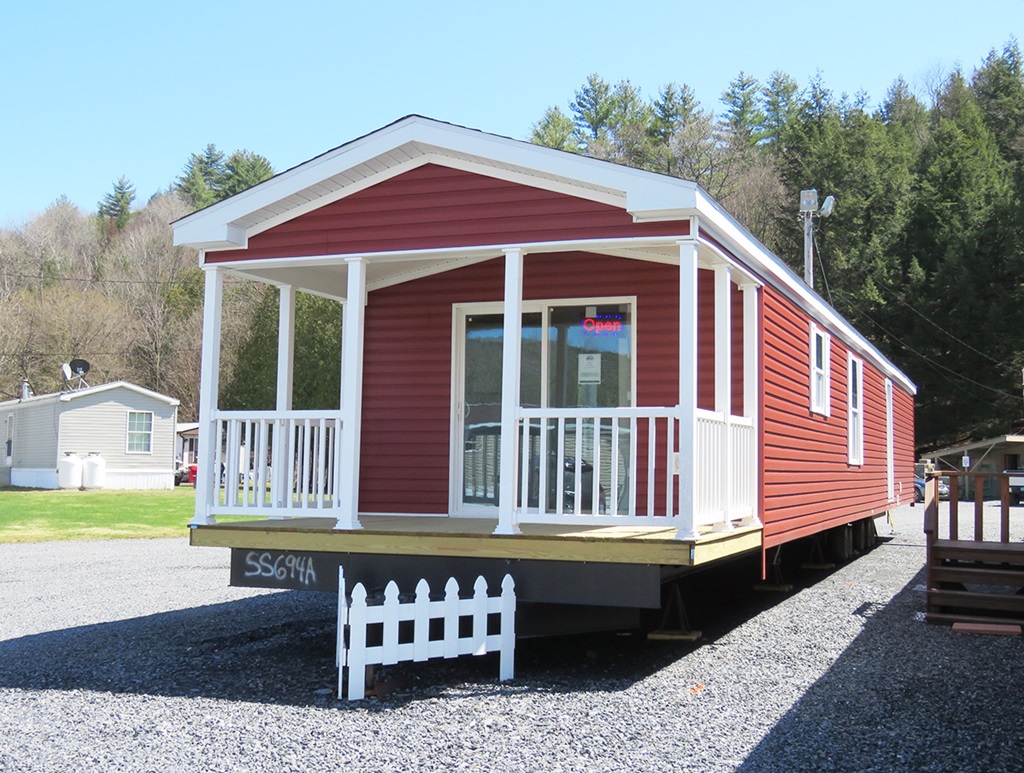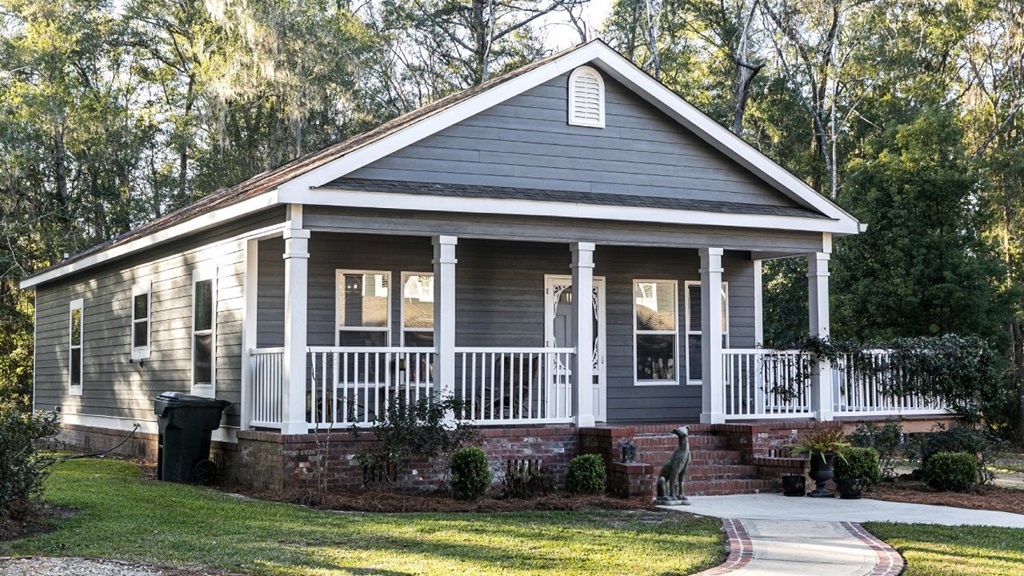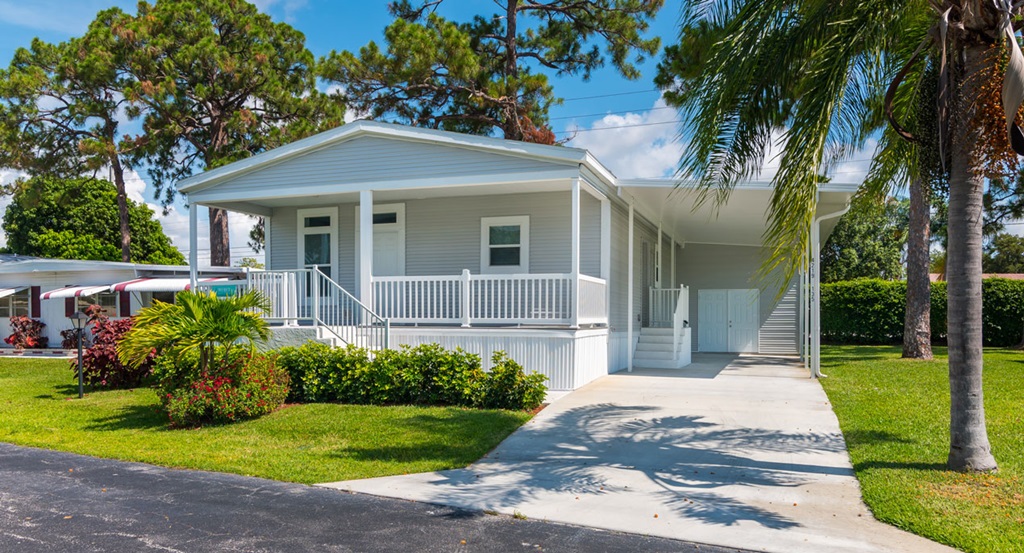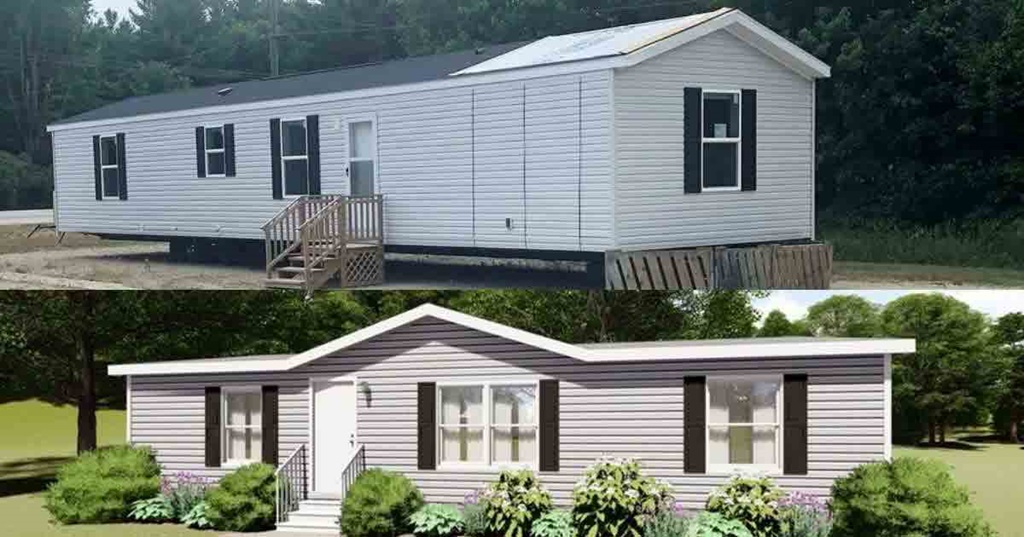Manufactured homes, once known as mobile homes, provide an affordable housing solution for many buyers. These factory-built homes come in two main configurations – single wide vs double wide. While they share some similarities, there are important differences between single and double wide manufactured homes. This guide examines the pros and cons of each to help you determine if a single wide or double wide home is the better choice for you.
What is a Manufactured Home?
Before diving into the differences between single and double wides, let’s first define what a manufactured home is. A manufactured home is a prefabricated house that is largely assembled in a factory and then transported to a site where it is installed and completed.
Manufactured homes differ from modular homes, which are also factory-built but transported in modules and completed on-site, more like a traditional site-built home. Manufactured homes also vary from mobile homes, a term that’s often used interchangeably but refers specifically to moveable homes built before 1976 when the HUD building code took effect.
All manufactured homes are required to meet federal standards overseen by HUD (U.S. Department of Housing and Urban Development). They must be constructed on a permanent chassis and be able to be transported to the site in one or more sections.
Single Wide Manufactured Homes

Here are some of the defining features of single wide manufactured homes:
Transportability
One of the biggest advantages of a single wide is it can be easily transported on public roads to the home site. No special permits or convoys are required. This makes a single wide home relatively affordable and simple to transport and set up.
They are ideal for placing on private property or in manufactured home communities. Their slim 12-foot width also allows them to fit into tighter home sites that cannot accommodate a larger double wide.
Affordability
Single wide manufactured homes tend to be more affordable than double wides. According to the U.S. Census Bureau, the median sales price of a new single wide in 2019 was around $59,000 compared to $96,000 for a double wide.
Of course, prices can vary greatly based on size, features, location and other factors. But pound for pound, single wides offer homeowners more home for less money upfront. Their lower cost makes them accessible to a wider range of buyers.
Customization
With single wide homes, buyers can often work directly with the factory to choose custom floor plans, select interior finishes, and pick options. This allows homeowners to customize the home to their tastes and needs.
That said, the customization is still limited by the constraints of fitting everything into a 12-foot wide box. And structural changes are not possible during transport.
Drawbacks
The skinny shape and smaller size of single wides also comes with some downsides:
- Less living space – By design, single wides offer less overall interior space than double wides. The home’s layout and storage space may be cramped as a result.
- Limited options – There are fewer floor plan configurations and design options with single wide homes. You may not find an ideal layout for your needs.
- Lower resale value – Single wides tend to depreciate in value faster than double wides and site-built homes. This can make it more difficult to sell or get your investment back.
- Potential foundation issues – Some single wides are placed on pier foundations that may be more prone to settling and structural movement over time.
Double Wide Manufactured Homes

Here are some of the main features of double wide manufactured homes:
More Living Space
With two boxes connected side-by-side, double wides naturally provide almost twice as much interior living space as a single wide. This allows for roomier bedrooms, larger living areas, spacious kitchens, and ample storage.
Families or retirees who need more elbow room typically gravitate toward double wides for their expanded layouts. There’s also more flexibility in floor plan options.
Greater Customization
The increased size of a double wide enables buyers to customize the home’s layout and finishes more extensively. You may be able to choose multiple bathrooms, a larger master suite, a den or office, etc.
With greater flexibility in the factory construction process across two sections, more structural customization is also possible compared to a single wide.
Higher Resale Value
While no manufactured home will appreciate like a site-built house, double wides generally hold their value better long-term. According to data, double wides tend to retain around 60% of their value over time compared to just 44% for single wides.
The larger size and increased amenities of many double wides make them more appealing to subsequent buyers down the road.
Challenges
Double wide homes also have some disadvantages to consider:
- Higher price – The base cost of a double wide is typically $30,000 to $50,000 more than a comparable single wide home. You’ll need a bigger budget.
- Limited transport – Getting a double wide to the site requires special oversized load permits and possible road closures. Not all routes are accessible.
- Complex setup – Once on site, joining the two sections together into one cohesive home takes more time and skill. The foundation must also handle the added load.
- Higher energy costs – Heating and cooling a larger double wide usually leads to higher monthly utility bills. It’s more home to power.
Single Wide vs Double Wide: Key Differences
To recap, here are some of the main differences between single and double wide manufactured homes:
- Width – Single widths are 12 feet wide on average. Double widths span 24 to 28 feet wide.
- Transport – Single wides can be towed easily with no special permits. Double wides require escorts and route planning.
- Setup – Single wides are installed whole on site. Double wides require marrying two sections into one.
- Living space – Single wides offer 700-1,500 sq.ft. on average while double wides provide 1,200-2,800 sq.ft.
- Customization – Double wides enable more flexibility in floor plans and design options.
- Cost – Single wides are $30,000-$50,000 cheaper upfront than double wides.
- Resale value – Double wides retain value better long-term – about 60% vs. 44% for single wides.
- Foundation – Single wides use pier foundations more prone to settling. Double wides often have slab foundations.
No matter which width you choose, a manufactured home can provide an affordable, customizable housing option. You’ll want to carefully weigh your space needs, budget, foundation preferences, and local transport regulations as part of deciding between a single wide vs double wide home.
Choosing Between Single and Double Wide Homes

- How much living space do I need? Single wides work well for singles, couples, or small families comfortable with a smaller home. Double wides better accommodate larger families or buyers wanting spacious rooms.
- What’s my budget for the home purchase? Single wides are significantly cheaper upfront but offer less long-term value. Double wides cost more but hold their value better over time.
- How permanent will my housing need be? Those wanting a more permanent residence may prefer a double wide with a slab foundation. Single wides can work better for more temporary living situations.
- Do I prefer customizing the floor plan? Double wides enable buyers to tailor layouts and designs more than single wides allow.
- How difficult will transportation to my site be? Single wides can maneuver down more roads. Double wides may be restricted by tight turns, low overpasses, weight limits, etc.
- How important is energy efficiency and cost? The larger size of double wides usually results in higher monthly utility bills. Single wides are more energy efficient spaces.
Also inspect the exterior construction, insulation, appliances, and other features. While size differs, quality can vary greatly between manufactured home brands and models. Get quotes from multiple retailers once you settle on single or double wide.
Pros and Cons of Single Wide Manufactured Homes
Pros:
- Lower purchase price and long-term cost
- Easier to transport without special permits
- Can fit narrower home sites
- Limited customization possible
- Good for smaller households
Cons:
- Less living and storage space
- Very limited layout options
- Faster depreciation and lower resale value
- More prone to potential foundation issues
- Less energy efficient
Pros and Cons of Double Wide Manufactured Homes
Pros:
- Much more living and storage space
- Wider range of floor plan options
- Greater customization flexibility
- Holds long-term value better
- Feels more permanent with slab foundation
Cons:
- Higher initial purchase price
- Transport requires special permitting
- More complex setup joining boxes
- Not all roads accessible
- Less energy efficient
Final Advice on Choosing Between Single and Double Wides

Think about the long-term as well since manufactured homes depreciate over time. While you’ll spend more upfront on a double wide, you may recoup more of that investment later.
Also factor in the installation logistics to your prospective home site. A single wide can likely access more locations with ease. But a double wide may be worth the extra transport planning if your perfect property is a bit harder to reach.
Carefully going through this decision process will lead you to the right-sized manufactured home to call your very own, whether single or double!
Conclusion
When deciding between purchasing a single wide vs double wide manufactured home, the most important considerations are your space requirements, budget, desired customization, foundation type, and transportation logistics.
Single wide homes provide a more affordable option that efficiently meets the needs of singles, couples and smaller families. But they offer less living area, limited layouts, and faster depreciation.
Double wide homes cost more upfront but allow buyers to better customize to their needs. The two combined sections provide almost twice the living space of single wides. And double wides tend to retain their value better long-term.
Carefully weigh the pros and cons on single wide vs double wide manufactured homes before making your purchase decision. Identify the best width, floor plan, and features to suit your household and home site. With manufactured homes, you can find quality construction with room to grow at an affordable price.
Key Questions
-
How much living space does your household require?
Single wides range from 700-1,500 square feet. Double wides offer 1,200-2,800 square feet. Make sure to consider future needs too if your family is growing.
-
What is your total budget for purchasing the manufactured home?
Single wides start around $59,000 for a basic model but can approach $100,000 or more. Double wides range from $96,000 on the low end to $200,000+ for higher-end versions.
-
How permanent is your housing need for the home’s location?
Double wides with slab foundations make more sense for long-lasting residences. Single wides work better if you may relocate it eventually to a new property.
-
Do you prefer having flexibility in floor plans and home customization?
Double wides enable buyers to tailor layouts and finishes more extensively during factory construction. Single wides offer fewer options.
-
How challenging will transporting the home be based on your location?
Single wides can maneuver down more roads whereas double wides need special permits and accessible routes. Consider the logistics to your site.

